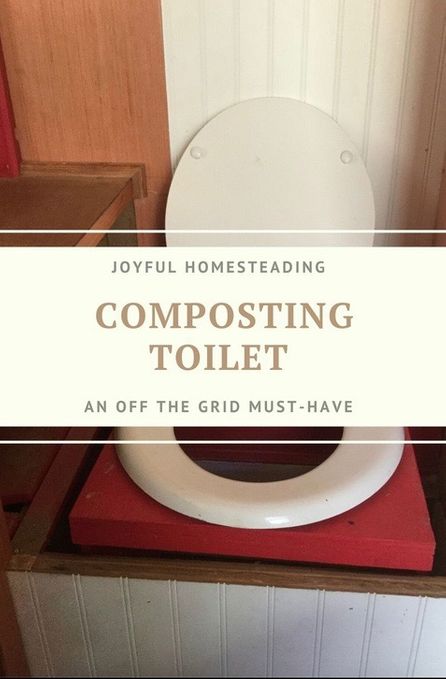Composting Toilet is an Off the Grid Must Have
A composting toilet is an off the grid must have, both providing rich nutrients for your garden and saving money over the long run by replacing the ordinary toilet – the single biggest waster of water in your home.

Ordinary toilets will sometimes use between four to six gallons of water per flush.
The composting commode on the other hand will use very little water. The long-term savings could be phenomenal. If you've never heard of one or seen one in action, you may have some misconceptions about this marvelous appliance.
Won't They Smell?
Think compost toilet, and you’re probably thinking about an outhouse or those awful, green port-a-potties usually available on campgrounds. Those smelly eyesores have given the composting toilet a bad reputation.
These are not just pots that store...well...you know what. Instead, they work just like your compost pile, only better and far more efficiently than any compost could dream of working.
And like your compost pile, if there is a smell, it means either the
self contained composting toilet is not working properly, or it is
overloaded. Follow the guidelines suggested by the manufacturer and you
shouldn't have any smell at all.
How Does a Composting Toilet Work?
It's like your compost pile on steroids. Here are some of the features most of these toilets have:
- A vacuum pump to suck away all the stinky odors and add oxygen to the mix
- Air baffles that evenly distribute that oxygen and add a bit more
- Heating units that keep the waste at the best possible temperature
- Mixing tongs to keep things stirred up so they continue to compost quickly
- Composting worms and macro-organisms that will eat through the waste and convert it even faster
There are two basic types: The first keeps the waste within the unit itself, completing the composting there, while the second type flushes the waste to a remote unit below the toilet.
What Can Go in Them?
Anything organic, including food scraps, egg shells, paper and cardboard, lawn clippings, clothes from natural fibers and disposable cotton diapers and tampons (without the plastic tags).
Will They Clog Up?
Only if they are overloaded. If the entire extended family drops by, your system should be able to handle the stress, but if you buy a toilet designed for a family of four and you have a family of nine, you might have problems.
How Much Do They Cost?
The good news is the price is going down on self contained toilets. While the price used to run about $2,000 American dollars, you can now purchase one for about $900. That's still a pretty high price tag, but you need to think about long-term investment plus savings over the long haul when considering purchasing one of these.
Also, if you are thinking about building your home in the country, these toilets cost less than installing a sewer system. Better still, you are also not dependent on the grid to run your toilet, saving utility costs. You can learn more here.
Learn More About Going Off the Grid










New! Comments
Have your say about what you just read! Leave me a comment in the box below.